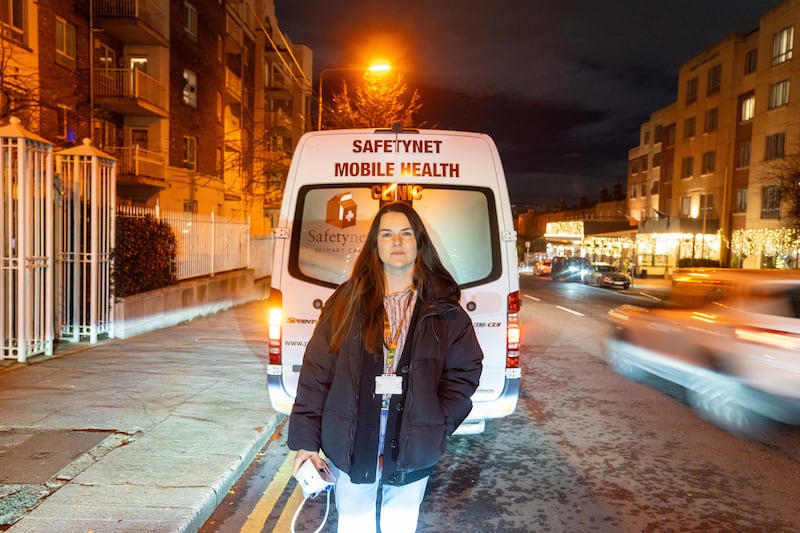In the Stillorgan-Goatstown area of south Dublin a group of parents frustrated at challenges in accessing local schools for their children has now grown to involve about 500 people.
Healthcare regulator Hiqa has acknowledged that a shortage of family doctors is delaying access to GP services and that many practices are unable to take on new patients.
In reports to her board over recent months, the chief executive of the National Transport Authority (NTA) Anne Graham has said passenger numbers using public transport “continue to trend upwards compared to last year”.
In June she said that there had been an 8 per cent rise in passenger numbers recorded across all services compared with the same period last year.
READ MORE
The Government has insisted that hospital waiting lists are falling but in May there were still more than 705,000 people queuing for some form of treatment.
In recent weeks the Parliamentary Budget Office in the Houses of the Oireachtas estimated that more than 115,000 households have a continuing need for permanent State-supported housing.
Across key sectors, the Government is struggling to keep up with demand. But the problems may intensify as the population grows and staff recruitment and retention difficulties continue.
The Central Statistics Office (CSO) reported this week that the population increased by more than 98,000 and that there are now 5.38 million people living in the Republic.
This period of growth seems set to continue, with projections indicating that the Government needs not only to plan for a rising population but also one that is ageing.
Edgar Morgenroth, professor of economics at Dublin City University’s business school, said that in virtually all projected scenarios the Irish population is likely to continue to increase.
He said the CSO has forecast that the population could range from 5.78 million to as high as 6.49 million within 20 years.
The most important factor in determining future population will be the numbers moving into the country from abroad but it is not the only part of the calculation.
While fertility rates have been falling, Irish people are living longer. The Department of Health said that in the decade to 2021 life expectancy had increased by almost two years for men and just under one year for women. Morgenroth said that it was “hard to imagine a scenario in which the population will decrease”.
“Even if there was no migration the number of births still exceeds the number of deaths, so the overall population will continue to rise,” he said.
The Government “urgently needed to incorporate these projections into their plans”, he said.
Government departments are updating their plans and targets.
The Department of Housing said the National Planning Framework – initially published in 2018 – was being revised, while updated housing targets will be published in the autumn.
Minister for Housing Darragh O’Brien has asked local authorities to carry out a new assessment of the amount of land in their areas that is zoned and serviced for housing.
Department of Education projections suggest the peak level of enrolments is approaching for secondary schools.
This is the problem faced by parents in south Dublin who have experienced difficulties in securing school places.
Local parent Eric Leonard said that a huge issue in the Stillorgan-Goatstown area was that secondary schools were oversubscribed.
This culminated in two or three children in the locality not having a school to attend until shortly before the start of the new term, although they had subsequently found places, he said.
The “secondary schools crisis action group” – established earlier this year – is seeking reforms to admission policies and greater oversight by the Department of Education.
The department acknowledged earlier this year that there were enrolment pressures at second level in some areas, including parts of Kildare, north and west Dublin, Cork, Wicklow and Galway.
However, an official department school capacity report – obtained by The Irish Times – indicated there were many more areas of the country where schools were oversubscribed.
The department argued that other factors could contribute to schools being oversubscribed such as the duplication of applications, preference for particular “prestige” schools and pupils coming from outside a local area.
The department believes that nationally primary school enrolments peaked in 2018, but in about 21 per cent of individual schools student numbers continued to rise. At secondary school level, the enrolment peak nationally is forecast to be reached by 2026 but in several areas this may come later.
Under what it considers the most likely migration and fertility projections, the department forecasts that primary school enrolments will reach a low point of 478,152 by 2036.
However, it forecasts they “will rise again thereafter and are projected to reach 502,166 pupils by 2042″.
At second level the department forecasts the number of pupils entering first year will fluctuate until 2029, fall between 2030 and 2033, fluctuate again until 2042 but will rise again in the period up to 2051.
The Government argues that it has been investing large sums to deal with demographic pressures.
“Since 2020, the Department of Education has invested in the region of €4.9 billion in schools, involving the completion of over 900 building projects and with construction currently under way at approximately 300 other projects, which includes 30 new school buildings,” a Department of Public Expenditure report said in August.
The health system is also preparing for both a rising and ageing population.
Minister for Health Stephen Donnelly has maintained that in the next two decades the age group with the largest increase will be those aged over 85.
The Department of Health said there were 833,300 people aged 65 or over and that this category had increased by more than 156,000 people since 2018.
It is working with the Economic and Social Research Institute, the think tank, to refresh a review of capacity originally carried out in 2018 in light of new population forecasts.
HSE modelling also fed into the recent Government plan to deliver 4,367 acute hospital in-patient beds by 2031.
Doctors argue that these will not be enough.
“We are running to stand still and need a commitment of an additional 5,000 acute beds,” said the Irish Medical Organisation (IMO).
A pressure point has emerged in general practice where a rising population and staff shortages have resulted in longer waiting times and some practices closing their lists to new patients.
About 40 per cent of people are covered either by a full medical (general medical services) card or a GP-Visit card with the cost met by the HSE.
The HSE told Sinn Féin health spokesman David Cullinane in April that 25 general medical service panels were vacant. One panel, on the Aran Islands of Inis Oírr and Inis Meáin off the west coast, has been vacant for more than 16 years.
“These practices are currently covered with locum GPs or doctor-in-charge arrangements while permanent solutions are being pursued”, the HSE said.
For private patients, general practice is largely determined by the market.
Donnelly has told the Dáil that GPs are “self-employed practitioners and therefore may establish practices at a place of their own choosing”.
“There is no prescribed ratio of GPs to patients and the State does not regulate the number of GPs that can set up in a town or community,” he said.
Healthcare chiefs are seeking to boost the number of GPs in the country.
The HSE said there will be a 25 per cent increase in the numbers training to be GPs – up to 1,300 by 2026. It is also planning to bring in a further 250 doctors from abroad to work in urban and disadvantaged areas.
The IMO said these initiatives will take time and it was critical that the Government “supported those GPs, once qualified, to establish in practice and support existing practices to take on more GPs to manage increased patient demand”.
In the meantime the IMO said that the traditional same-day service in general practice is “under extreme pressure”. Same-day appointments are now usually only available for urgent cases, it said.
[ The Irish Times view on population and migration: understanding is keyOpens in new window ]
“There is also an issue where some GP practices are not in a position to take on new patients and each practice must determine the number of patients they can safely manage.”
Transport services in some areas are also coming under pressure, particularly those operating at peak periods in the afternoon.
“This is partly as a result of increased demand for public transport, but congestion is as big a factor, if not bigger, in putting services under pressure”, the NTA said.
“That’s why making progress on the bus priority infrastructure aspect of BusConnects is so important.”
- Sign up for push alerts and have the best news, analysis and comment delivered directly to your phone
- Join The Irish Times on WhatsApp and stay up to date
- Listen to our Inside Politics podcast for the best political chat and analysis

















